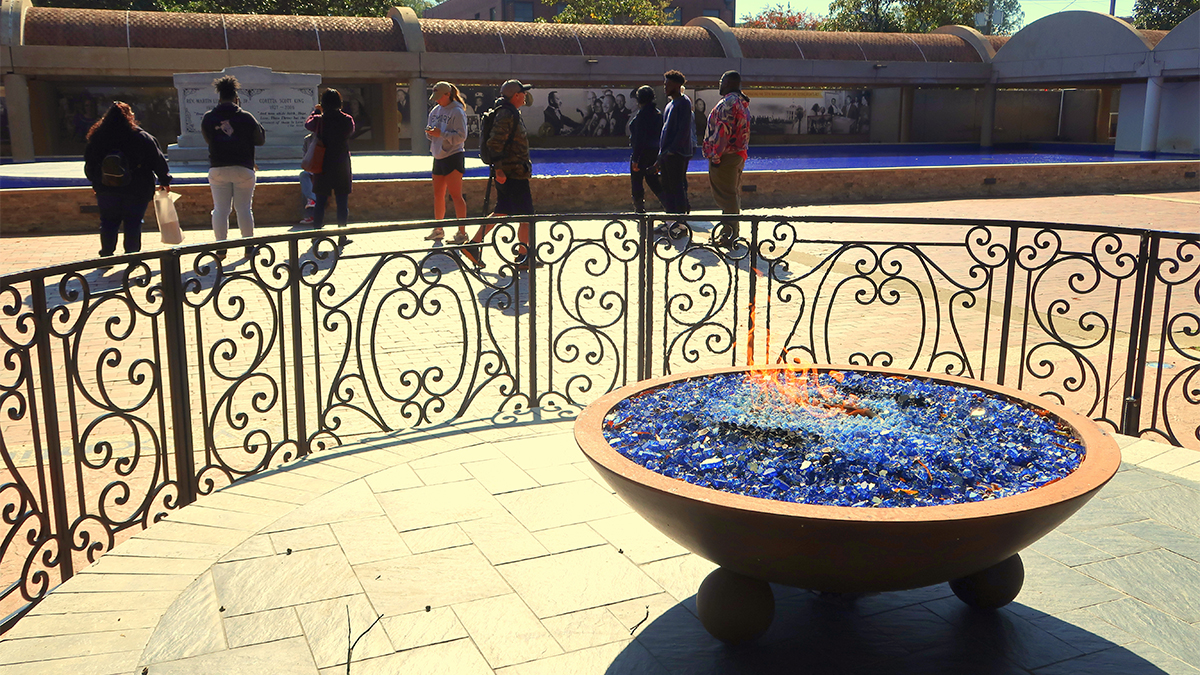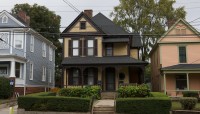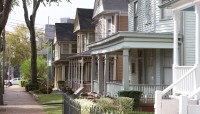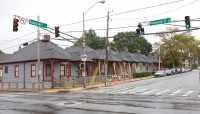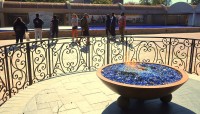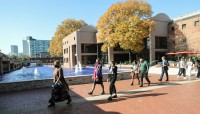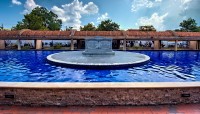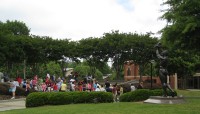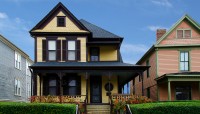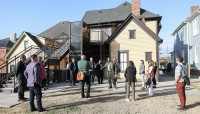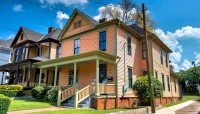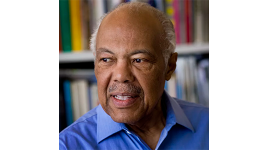Landscape Information
This L-shaped, 38-acre precinct is located within the Martin Luther King, Jr., Preservation District in the Sweet Auburn neighborhood. The district features multiple historically significant properties along Auburn Avenue associated with Dr. Martin Luther King, Jr., including his birthplace, church, and gravesite.
The eastern segment of Auburn Avenue, between Boulevard and Bradley Street, includes relatively narrow residential lots edged by concrete sidewalks. Several homes were established in the late nineteenth and early twentieth centuries, including a series of shotgun houses, and a two-story Queen Anne-style residence where King, Jr., was born and lived until the age of twelve.
Between Jackson Street and Boulevard, Auburn Avenue is bordered to the south by the Historic Ebenezer Baptist Church, where King, Jr., was ordained and served as co-pastor, and the King Center, established in 1968 by Coretta Scott King. The institution, which houses a museum, library, and archive, was designed by J. Max Bond Jr., of Bond Ryder and Associates (now Davis Brody Bond), and constructed between 1971 and 1982. The grounds include a gently sloped, linear brick plaza dominated by a rectilinear, tiered reflecting pool. The water feature is finished with blue tile and is framed to the south by a barrel-vaulted colonnade. The cascading pool includes a circular platform that holds a stone tomb containing the remains of Dr. King and his wife. North of the water feature, on axis with the tomb, is a circular plinth supporting an eternal flame in a bowl, shaded by willow oaks.
Opposite the institution and church, on the north side of the avenue, is a plaza and two adjacent structures, the Ebenezer Baptist Church Horizon Sanctuary and National Park Service visitor center. The plaza includes a modest amphitheater that serves as an outdoor classroom, and is planted with willow oaks, and a rose garden, established in 1992.
The Martin Luther King, Jr., Historic District was listed in the National Register of Historic Places in 1974 and designated a National Historic Landmark in 1977. The National Historic Site and Preservation District were established in 1980 and the park is part of the African American Civil Rights Network.




